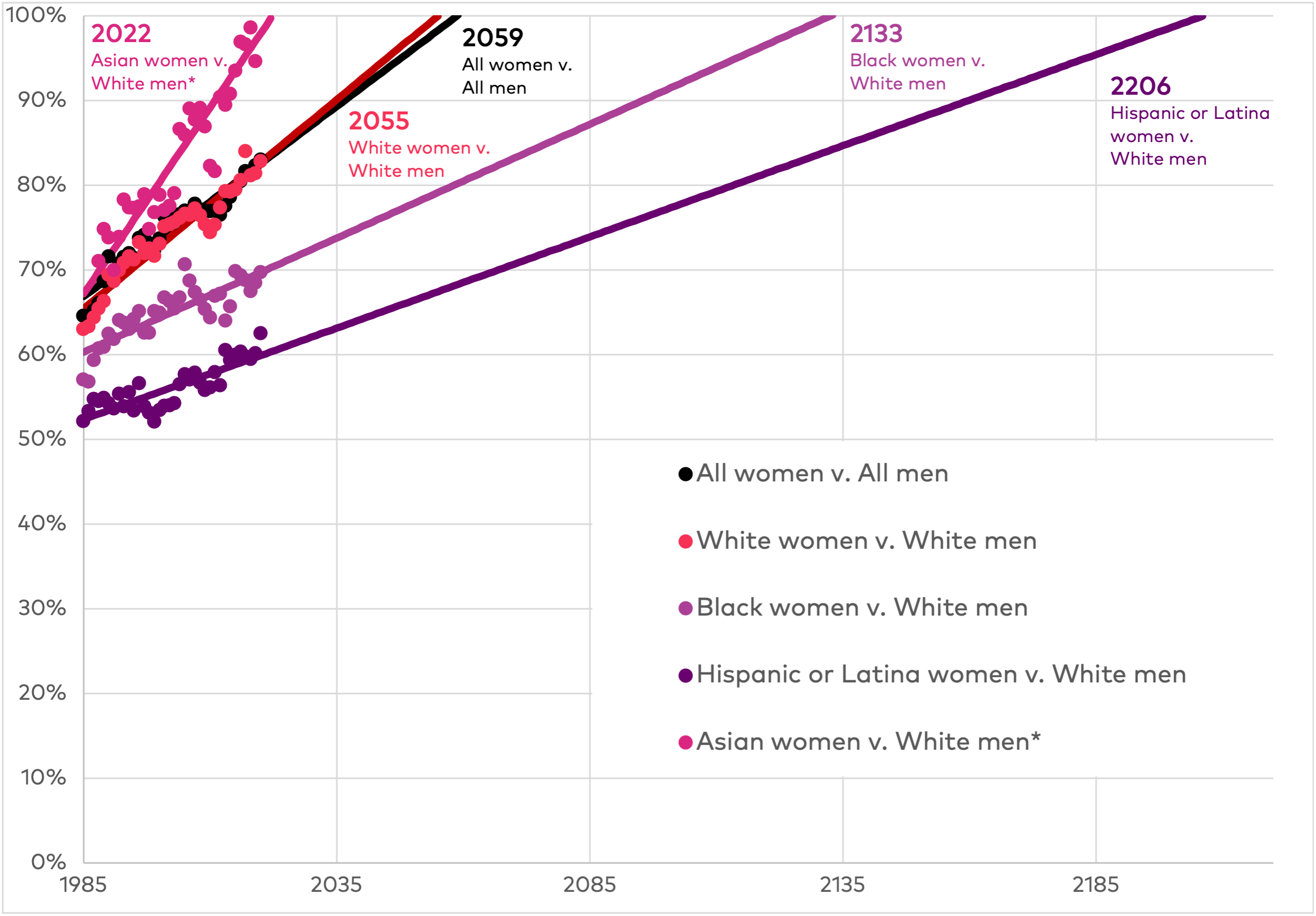If progress continue at the same rate as it has since 1985, it will take until 2059 to reach full pay equity between all women and men who work full-time, year-round. When comparing against White men’s earnings, the wait will be even longer for Black and Hispanic women (2133 and 2206, respectively).

Source: IWPR analysis of data from U.S. Census Bureau, “P-38 Historical Income Tables,” Current Population Survey, Annual Social and Economic Supplements (Washington, DC: U.S. Census Bureau, 2021), <https://www.census.gov/data/tables/time-series/demo/income-poverty/historical-income-people.html> (accessed September 14, 2021).
Notes: Estimates for all Women are based on the median annual earnings ratio for full-time, year-round women and men workers, while the estimates for Asian, Black, Hispanic or Latina, and White women are based on the median annual earnings ratio for full-time, year-round workers of each group relative to White men’s median full-time, year-round earnings.
* Earnings data for Asian women are only published starting in 1988. While Asian women’s earnings in 2020 for the first time were higher than White men’s (at 101 percent), this is not quite reflected in the simple linear model underlying these projections. 2020 earnings data, particularly for Asian women, reflect the disproportionate impact of the COVID-19 pandemic on women in low-wage jobs, who are more likely to have lost full-time, year-round work and to have higher survey nonresponse rates. The definition of racial/ethnic groups by the U.S. Census has changed over time.


